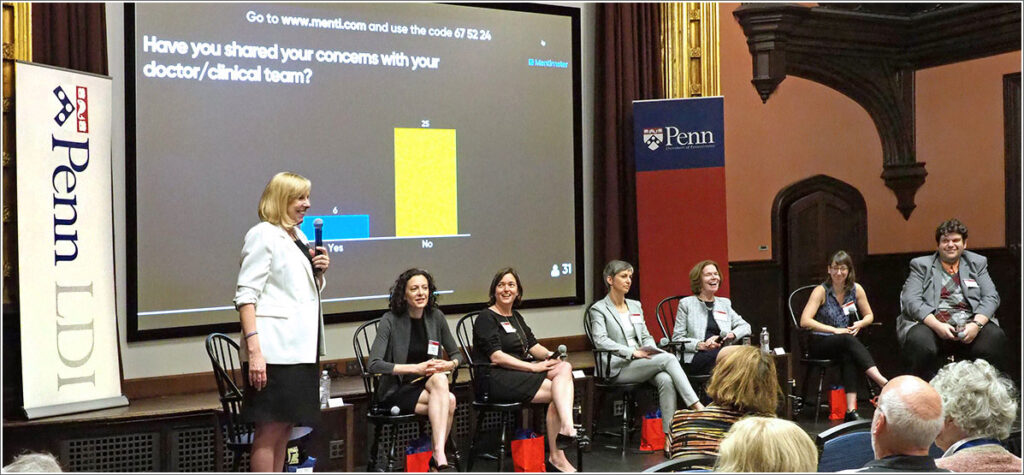News
Quantifying the Health Risks of Being a Family Caregiver
Why More Research is Needed in the Area of 'Next Friend Risk'
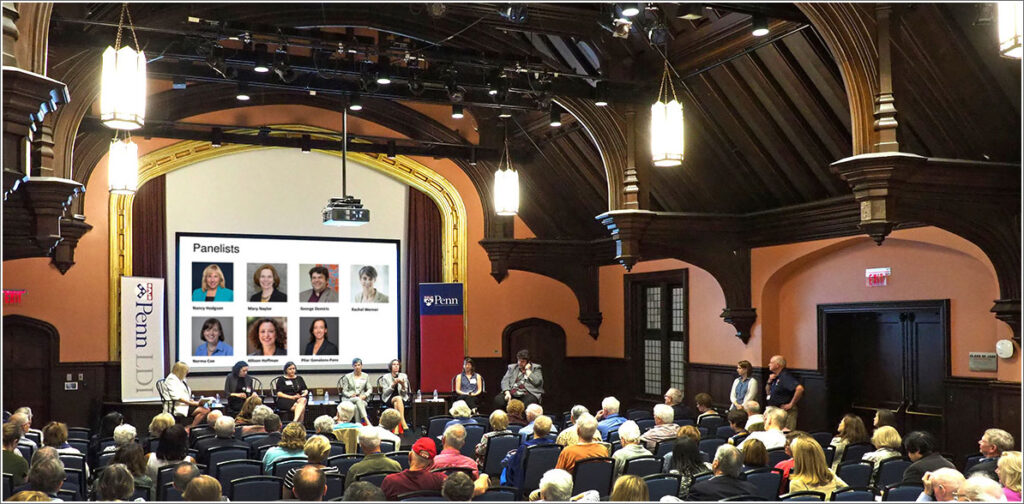
LDI’s annual faculty/alumni health care discussion panel featured seven top University of Pennsylvania health policy experts and members of the Penn class of 1969 who gathered in Houston Hall’s Class of ’49 Auditorium.
One of the questions health services research hasn’t fully answered yet is this: What is the full dimension of health risks faced by people who become caregivers for home-bound family members and friends requiring long-term care?
The topic was one of several explored at the University of Pennsylvania’s annual springtime faculty/alumni health care discussion panel, “Planning for Your Future Health Care Needs.” It featured seven faculty researchers from across Penn, who are top health services researchers deeply involved in the field of aging and health: Norma Coe of Penn Medicine; George Demiris of Penn Nursing and Medicine; Nancy Hodgson of Penn Nursing; Allison Hoffman of Penn Law; Pilar Gonalons-Pons of Penn Arts & Sciences, Mary Naylor of Penn Nursing, and Rachel Werner of Penn Medicine and LDI Executive Director.
Hosted by the Leonard Davis Institute of Health Economics (LDI), the event was co-sponsored by seven Penn schools and the Wharton Graduate Emeritus Society. The audience consisted largely of alumni from Penn’s Class of 1969 — a group keenly interested in aging issues.
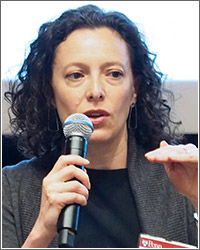
‘Next friend risk’
Dubbed “next friend risk” by University of Pennsylvania Law Professor and researcher Allison Hoffman, JD, the health risk faced by caregivers encompasses the financial, emotional, psychological and physiological impacts on family members and friends who devote large portions of their time and energy to a home patient’s constant needs. (“Next friend” is a legal term referring to a person who represents a disabled person who is unable conduct their own affairs.)
In her journal articles, Hoffman cited statistics that 40 to 70% of family and friends providing long-term care for older adults have symptoms of depression, and 25 to 50% “meet diagnostic criteria for major depression, far outpacing the rates in the general population.”
‘Think equally’
“Think about it in terms of yourself as a patient needing long-term care,” said Hoffman, an LDI Senior Fellow. “So if you need long-term care what are the risks you take? What health risks do you face if you don’t get the care you need? My question is what if we thought about that from the perspective of the friends and family members who often step in and provide that care for you? And I suggest that we should think equally about this risk to those caregivers.”
Perelman School of Medicine Associate Professor Norma Coe, PhD, has been working on several research projects seeking to better quantify how unpaid caregiving impacts the health and wellbeing of those who provide it.

“We did estimates for daughter/mother dyads because that’s the most common caregiver relationship that we have in the data,” said Coe. “If you look at women in their fifties who are taking care of their parents, the average spell is four years. That eventually requires them to spend time out of the labor market or changing jobs and changing what they do with their time.”
Value of what is lost
“We tried to quantify the utility for the daughter who’s providing this care: How much money would you have to give her to be just as happy and well off if mom never had an illness that required this type of care? There are the missed holidays and dinners with friends, skipped vacations, lost opportunities and a lot of work implications. Often they have to drop out of the labor market, and that has both current and future implications; a 60-year-old woman trying to re-enter the labor market has a 3% chance of getting a full-time job offer. So when you add it all up, our estimates are that long-term care costs the daughter about $80,000 to $100,000 per year in a combination of actual lost earnings, job advancement, and other life quality losses.”
Panel member Pilar Gonalons-Pons, PhD, an Assistant Professor of Sociology at the Penn School of Arts & Sciences, has been studying the underlying forces at work in both the paid and unpaid home caregiver labor force.
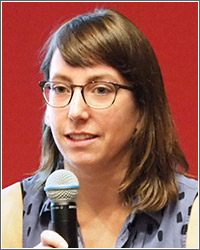
“My research looks at the social organization of caregiver work,” she said. “It asks how do we conceive caregiver labor? Who should be responsible for it? Who does it, and what are the consequences for those people?”
Feminization of care work
Gonalons-Pons’ latest projects are analyzing other countries’ caregiver policies and the feminization of care work in the U.S., particularly involving women from minority backgrounds in the paid caregiver field.
“I’m also looking at the devaluation of caregiver work — penalties family care workers pay in lost income, holidays and a number of other things,” she said. “On the paid care worker side, 40% of this large national workforce needs welfare and (SNAP Food Benefits) to get by because their full-time annual earnings are below the poverty line.”
Penn Nursing School Professor and Director of the NewCourtland Center for Transitions and Health Mary Naylor, PhD, RN, FAAN, sparked a round of nervous laughter from the audience that illustrated the ubiquity of her point about long-term caregivers.
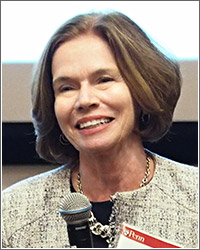
“I’m a mother of three daughters,” she said, “and from the moment of birth I told them ‘I’m going to be a burden,’ so it wasn’t surprising to me a number of years ago when all these brochures on long-term health insurance came to my door with notes from my daughters saying they didn’t really want the role I had assigned to them,” she told the laughing auditorium audience.
10,000 a day
Naylor, an LDI Senior Fellow, pointed out that 10,000 to 11,000 new beneficiaries are being added to the Medicare rolls daily, and that the health care infrastructure and government policymaking apparatus are not keeping up with the implications of that growth.
“The research work of our center has asked ‘What is it we can do to redesign care systems to enable you and your family caregivers to be better able to manage the challenges of aging?'” she said.
“We now have evidence-based solutions generated by our team and others that help us to know how to do that,” Naylor continued. “But what we don’t have are (national) policies to support actual use of those evidence-based solutions in practice.”
